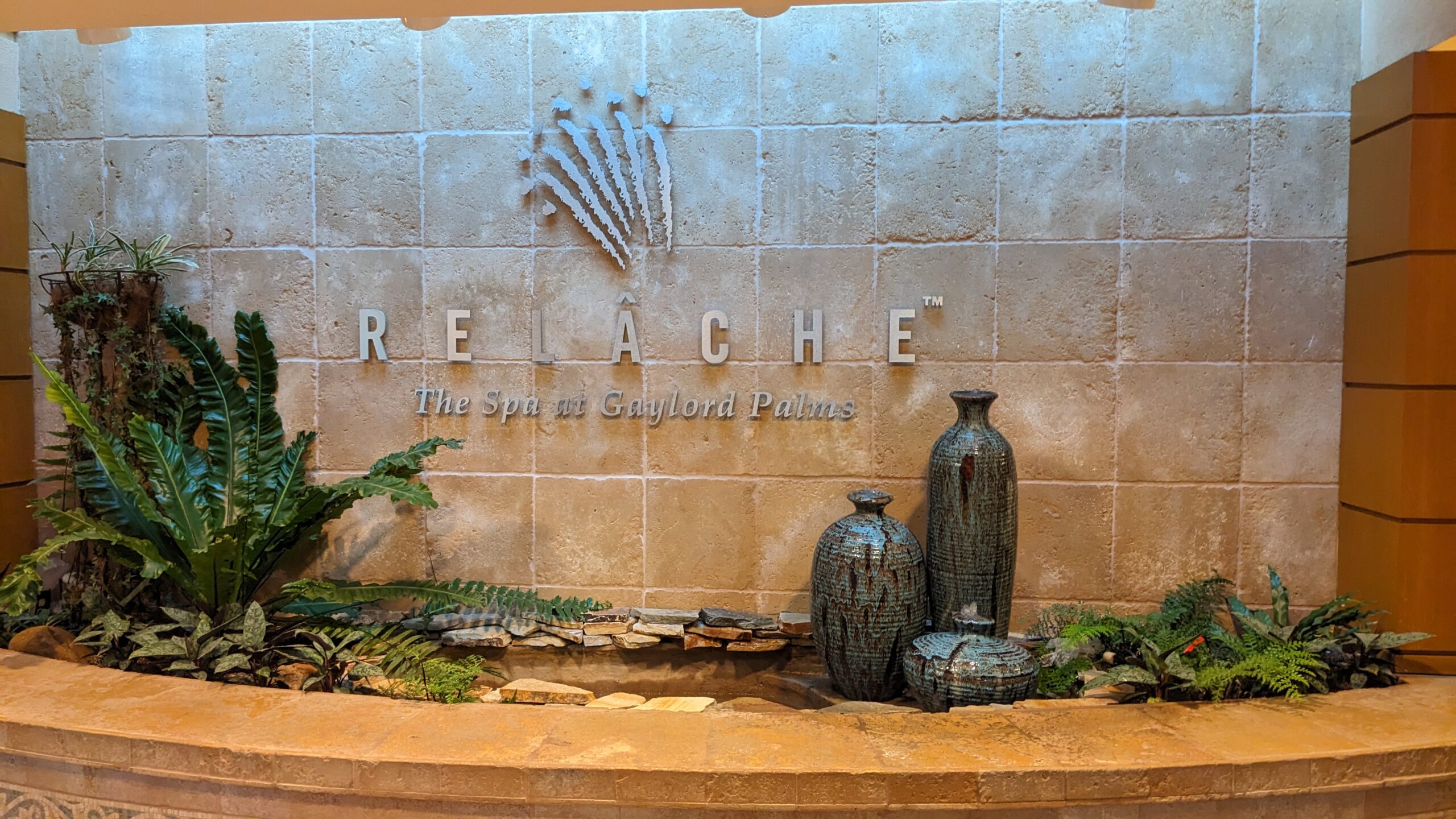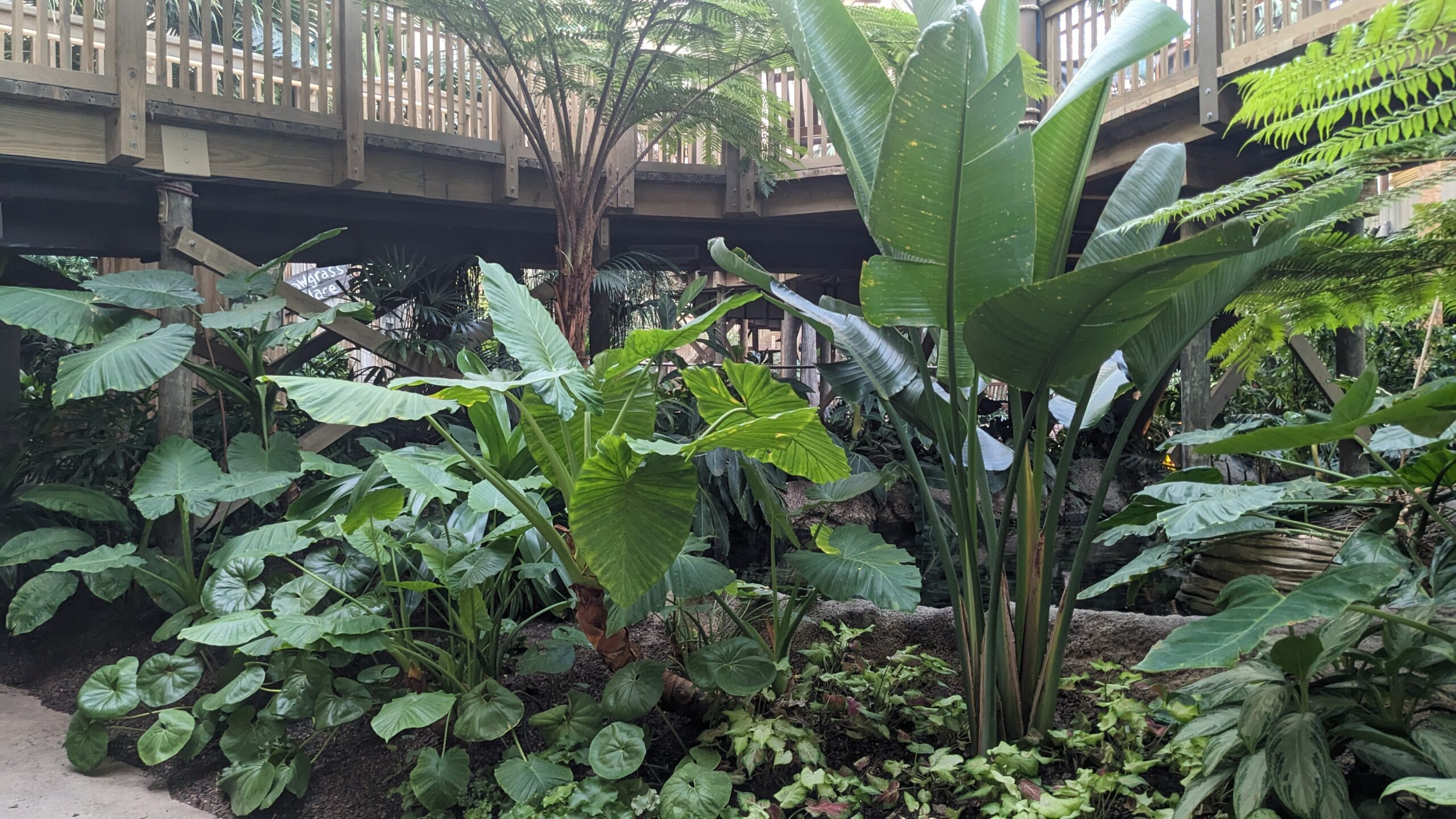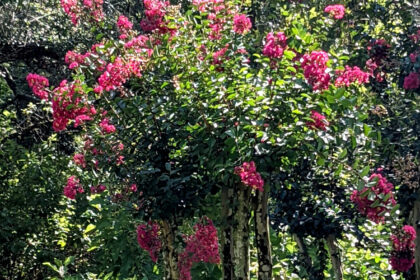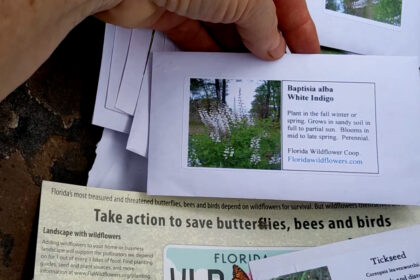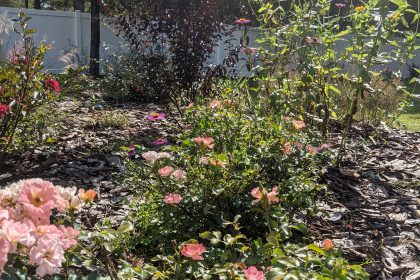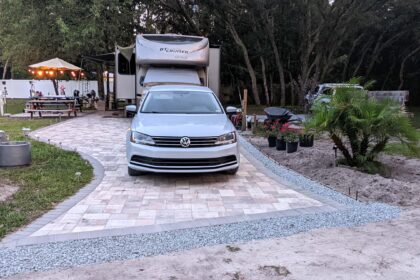(above: tractor seat plant, elephant ears, white bird of paradise, caladia, australian tree ferns)
Want a true wow factor in your garden? Be truly inspired by garden/landscape designs you can “borrow” from one of the most amazing gardens in zone 9b.
On a business trip at Gaylord Palms, I was stunned by the absolutely gorgeous gardens, both inside and out. The resort is in zone 9b in Kissimmee in central Florida. The indoor garden is under a glass atrium with temperature control which allows growing conditions for tropical plants typical to zone 10 and 11 as well zone 9. Many of these most of the world would consider “house plants.” In zone 9b, we can grow several of these outside except in the coldest parts of the winter.
If you plan a tropical landscape with most types of calathea, spathiphyllum, dieffenbachia, anthurium, philodendrons, monstera, australian tree ferns etc., you’ll likely need to keep them in pots in a protected area under the canopy of an oak stand, build a cover for them when temperatures drop, and/or prepare to move them into a garage or greenhouse in January and February. Perhaps the best course of action would be to find a satisfactory alternative that is better suited to zone 9b of central Florida.
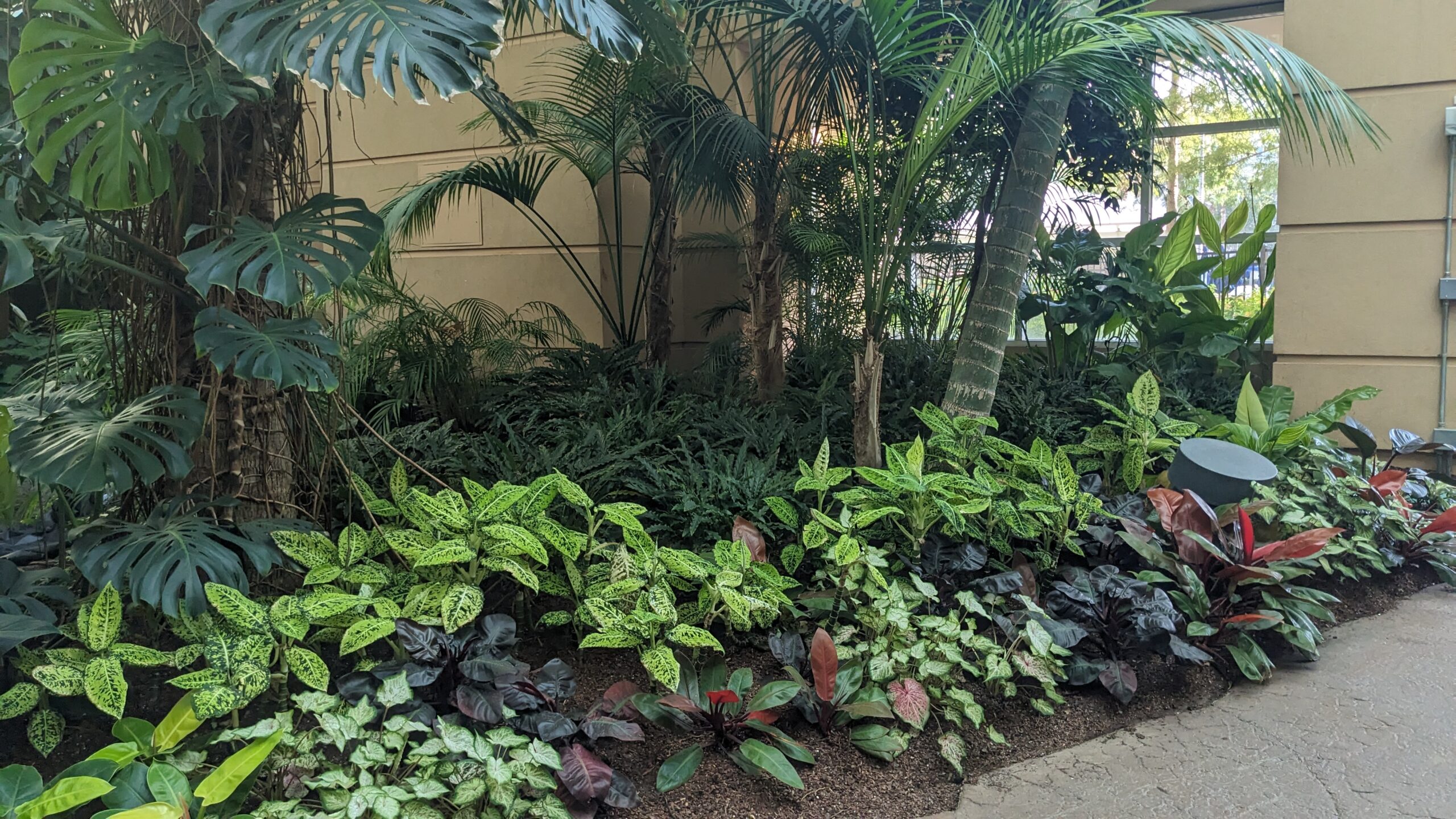
My key takeaways are that the successful designs of Gaylord require:
- masses of mass plantings
- lots of texture and color shifts (especially complimentary colors)
- fertilizer… the scent was palpable
- plant in layers with lots of vertical accents
- proper pruning
- water features
- plant in layers with vertical accents
Mass plantings.
While the resort had lots of variety, the successful design involved repetition upon repetition in swaths of mass plantings. Whether it be caladiums, lady palms, pentas, peace lilies, or crotons, Gaylord Palms doesn’t use three plants here or five plants there. It plants 30 plants or more to fill a large area.
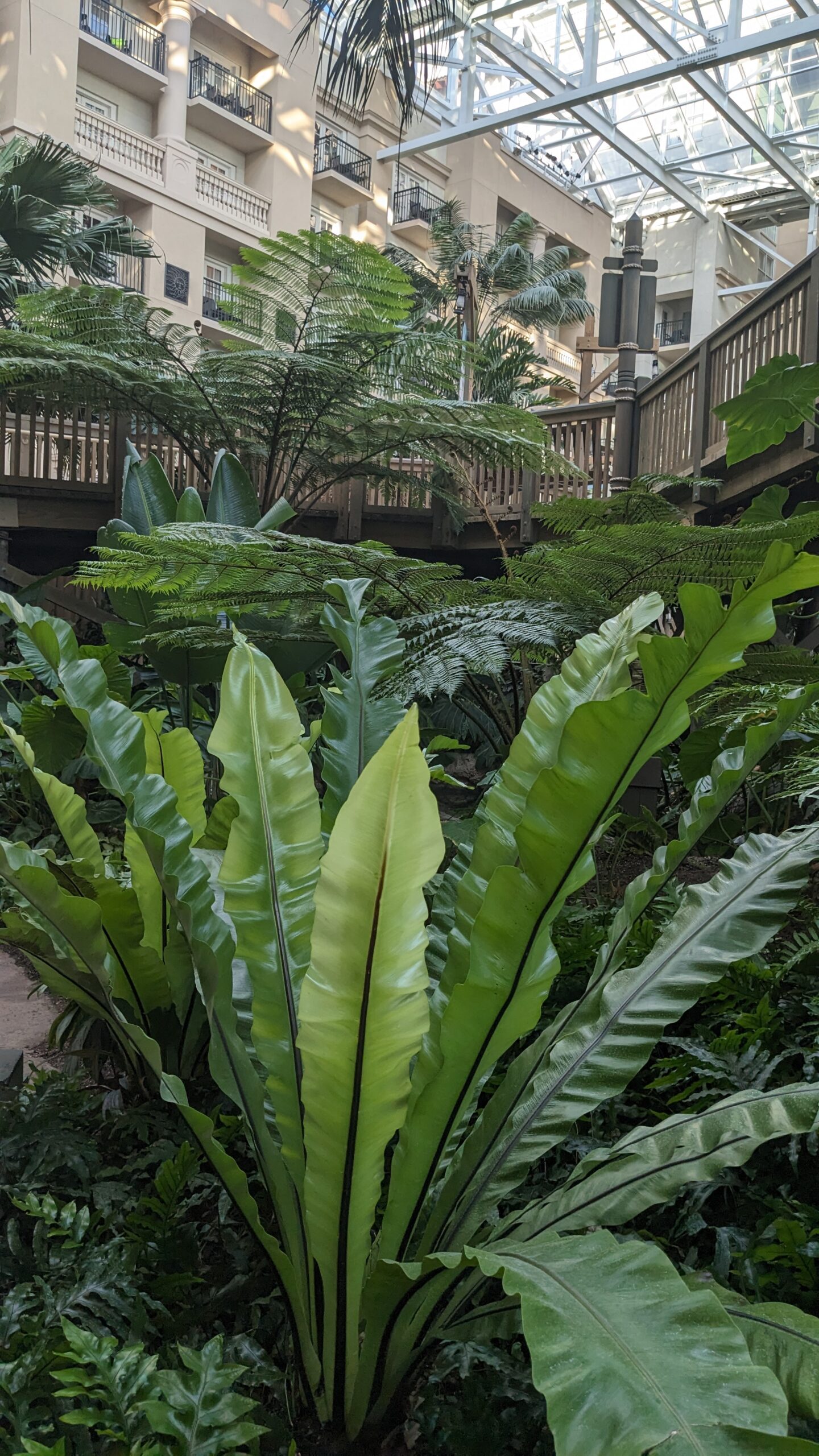
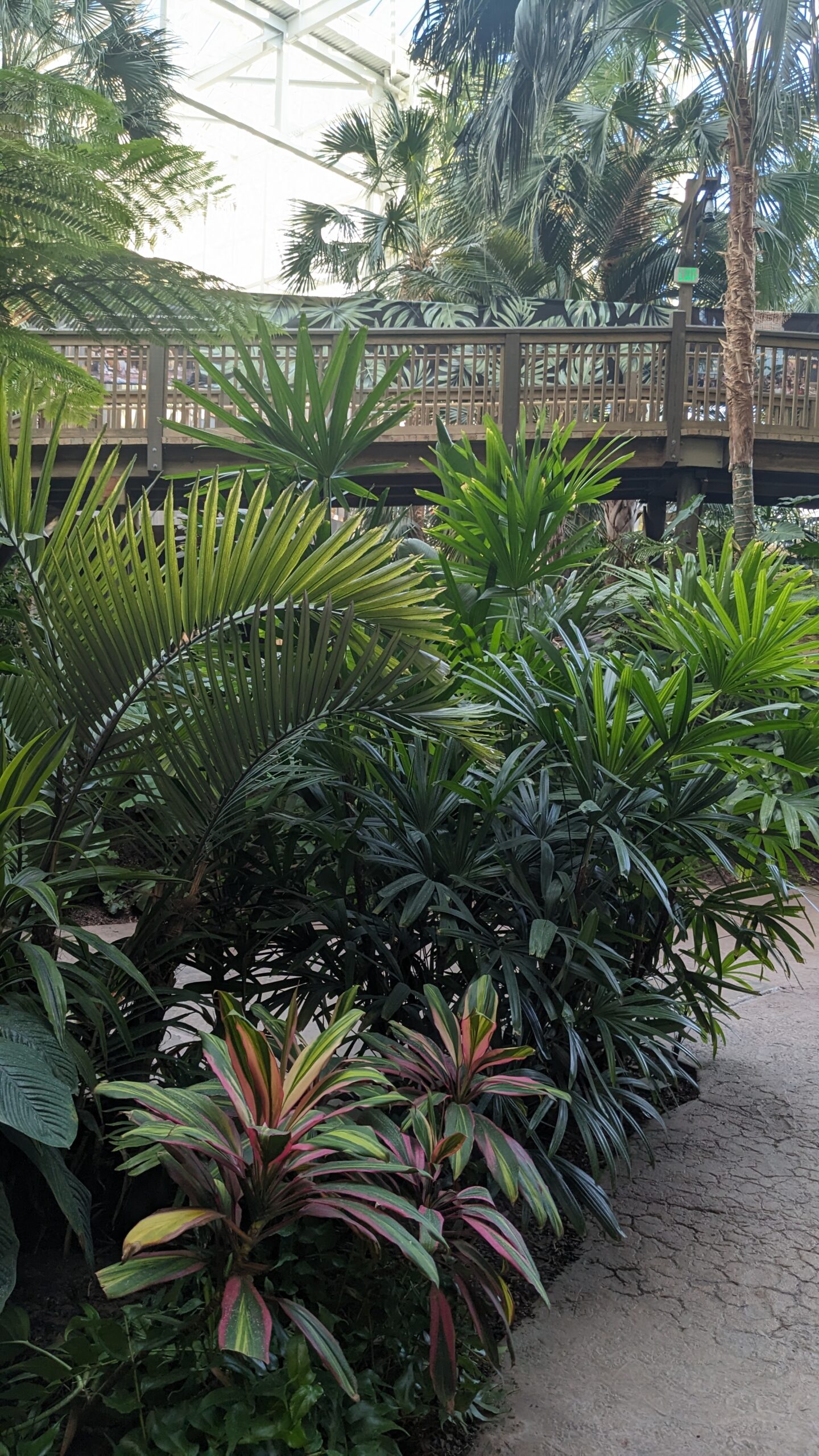
Even the trees were plentiful. In a not too large space, there would be seven trees in a bank or in a row, many more than I would think could work. However, most of these were highly pruned (especially the oaks) to keep an open feel yet the canopies provided plenty of shade along the paths. Trees like the weeping yaupon hollies, bottlebrushes, and crepe myrtles were obviously neatly and professionally trimmed. They were some of the loveliest trees I have encountered. Kudos to the arborists. And, of course, there were masses of palms in all shapes and sizes.
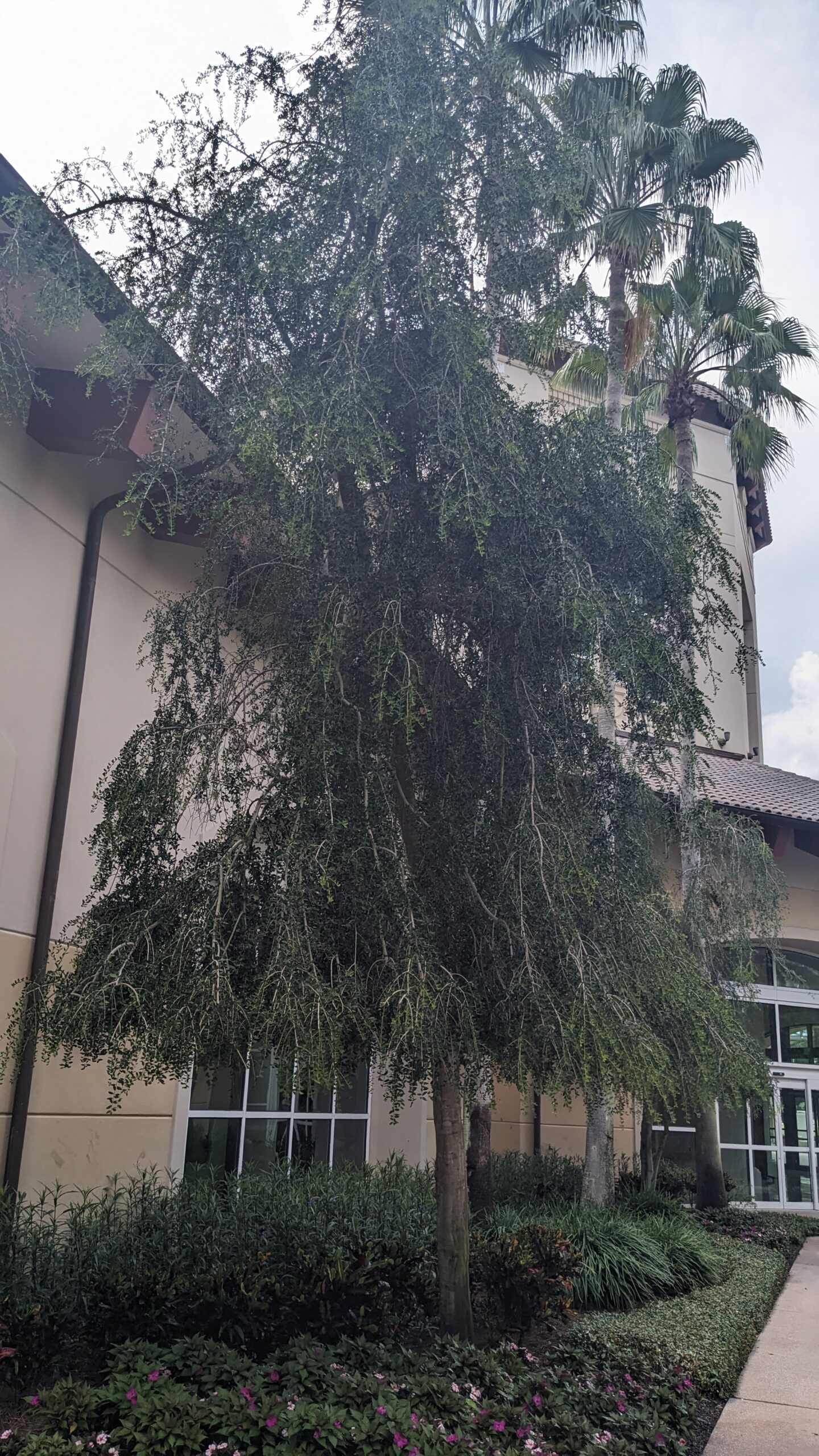
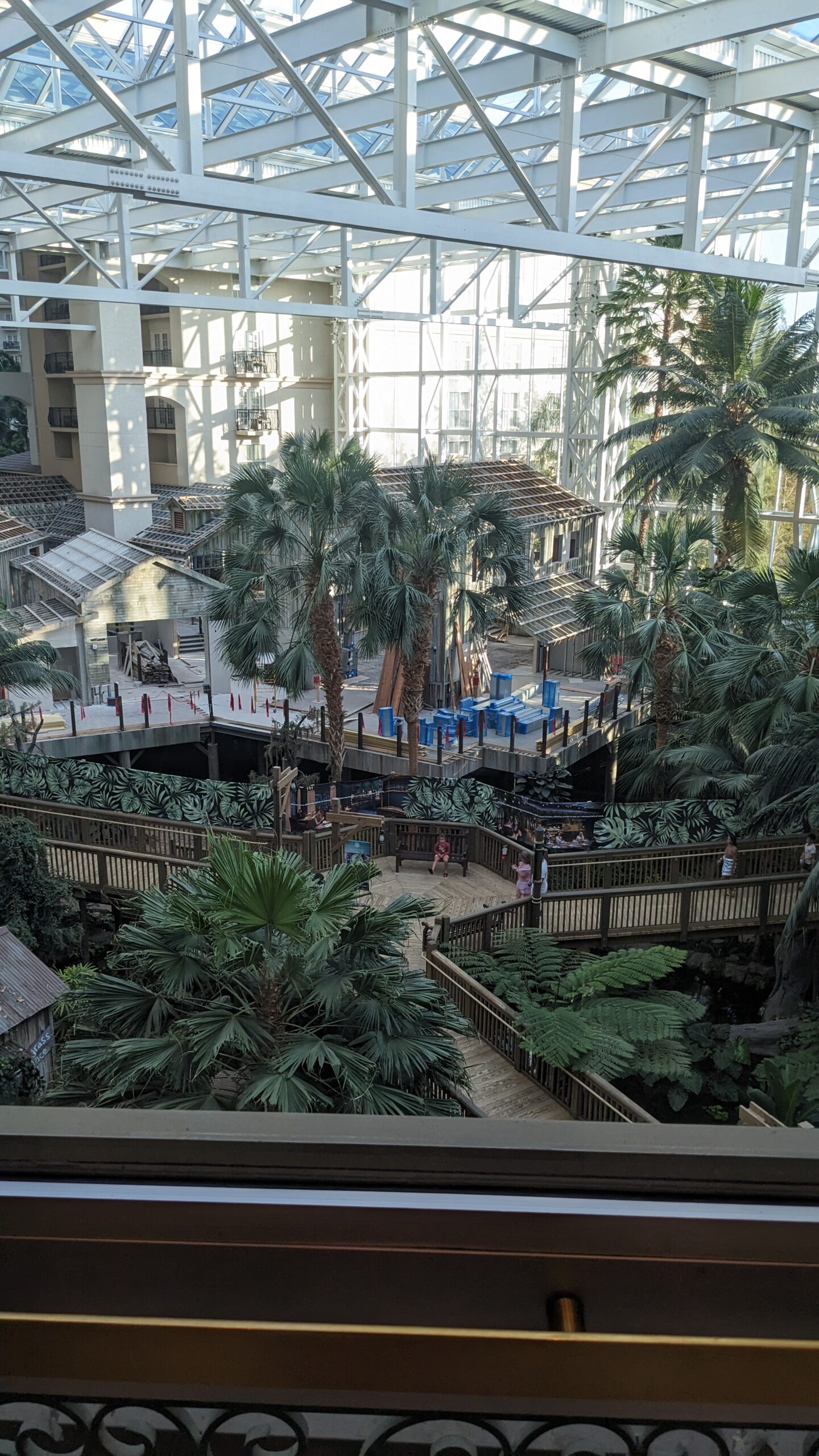
Contrast in color.
One of the most effective design features was the use of lime green in shady spots. Masses of chartreuse cordylines, neon dracaena, variegated ginger and schefflera. There were also plenty of light greenish white plants including caladiums, sloppy painter crotons, song of india dracaena, calathea, philodendrons, spider plants, fatsias, satin pothos and dieffenbachia/dumb cane (zone 10).
Of course, the shady spots have white or touches of red with plants like triostar calathea (stromanthe) and ficus or color in the flowers like peace lily and anthurium. Another great plant for the shade is Prince of Orange philodendron as well as a variety of bromeliads.
Not only did they have variations in color and texture, but they also have very pleasing contrasts in patterns!
Just to reiterate the mass planting idea… they didn’t plant just one or three… they carried the same groundcover plants for a good 20-feet in width and at least four-feet in depth.
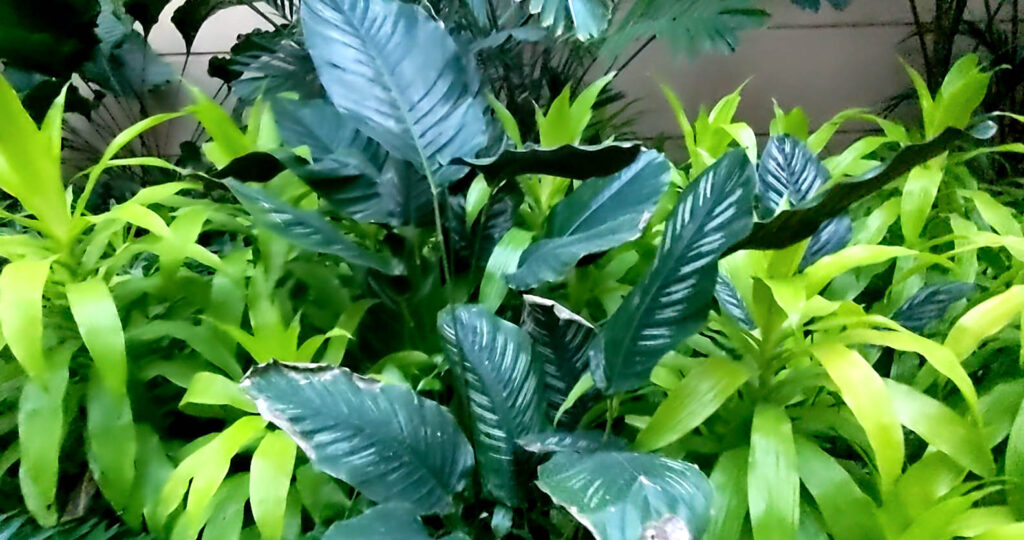
Add vertical accents
So far, I have sung the praises of the mass plantings… but the stars of the show were also the incredible and huge vertical structure plants or “thrillers” that broke-up of the horizontal lines of the mass “fillers” and “spillers.”
So many of the plants were monstrous! Including the monstera, elephant ears, banana trees, bird’s nest ferns, australian tree ferns, massive crinum lilies, palms and birds of paradise. The resort was filled with ginormous palms, including a focal point traveler’s palm (zone 10). Even the peace lilies/spathiphyllum (zone 11) were four-feet tall.
These gorgeous plants added excitement as they helped move the eye up to discover more multiple layers, cross bridges and walkways, and the architecture of the building with balconies as well as the incredible glass atrium ceiling.
Perfect Pottery
Even though there was plenty of space to plant “in the ground,” Gaylord took advantage of tucking in gorgeous vignettes of potted plants.
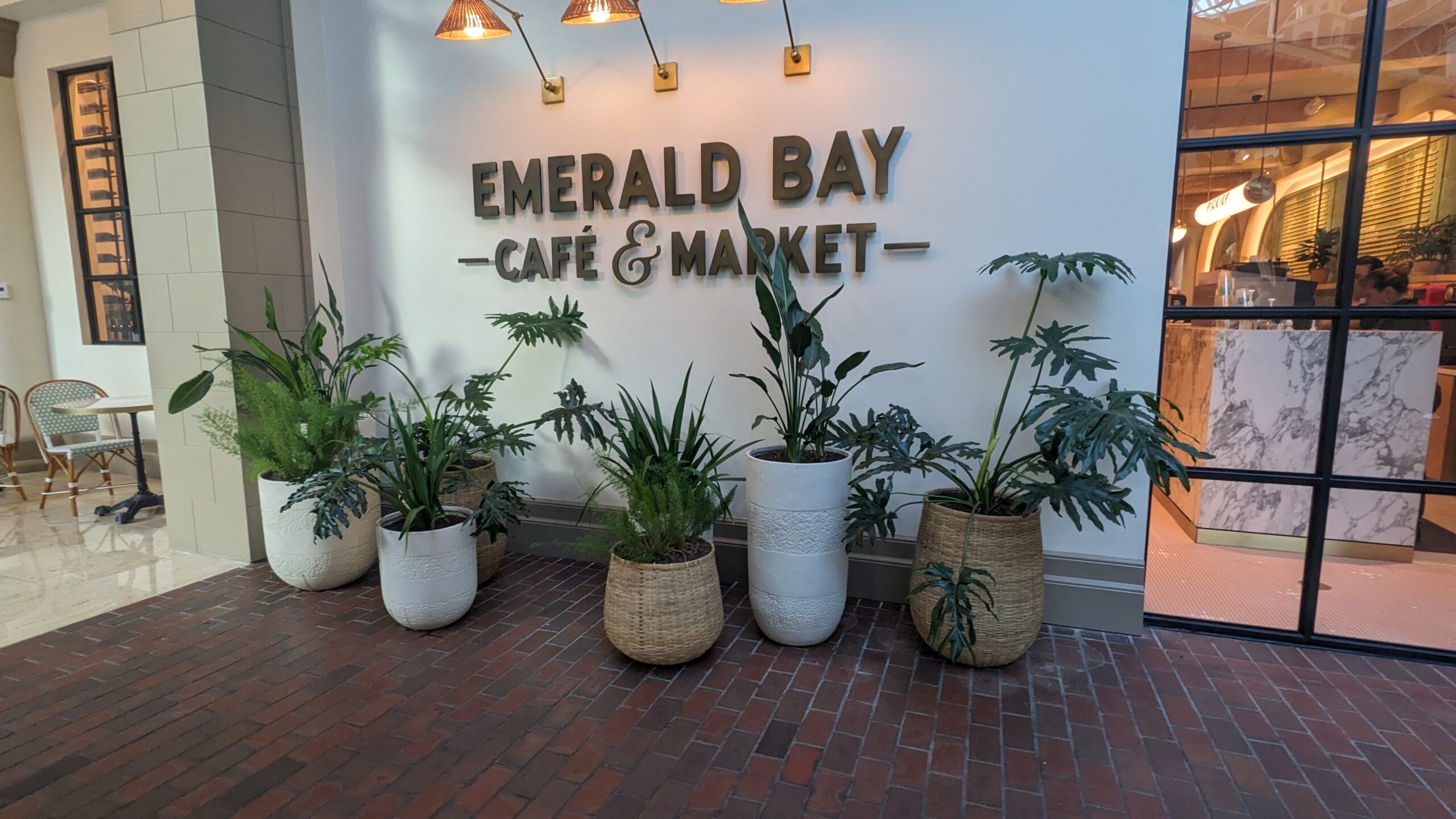
Water features
While the Gaylord has a massive system of rivers, pools, and waterfalls beyond the capacity of the average household, we can still incorporate the sights, sounds, and scents associated with a more residential friendly water feature. Consider a pond with a fountain, a pondless waterfall, a standalone fountain or even a birdbath with a solar sprayer. Pretty sure most of us don’t fancy having an alligator pit… or who knows? Maybe some of us already have real life ‘gators and turtles brought to us naturally! I know we have a ton of frogs and snakes.
